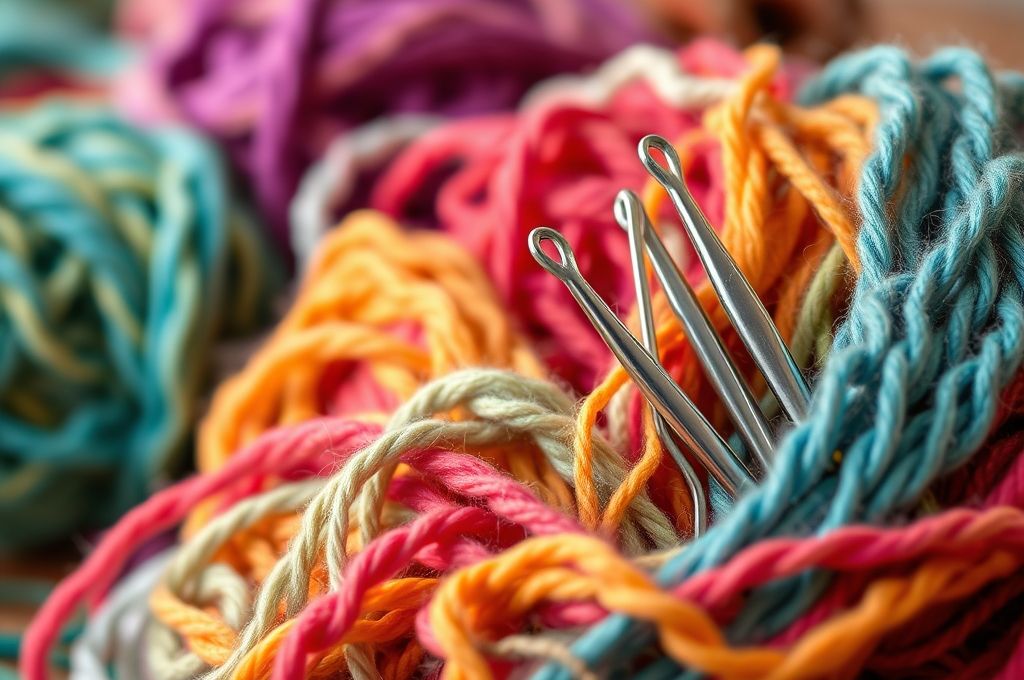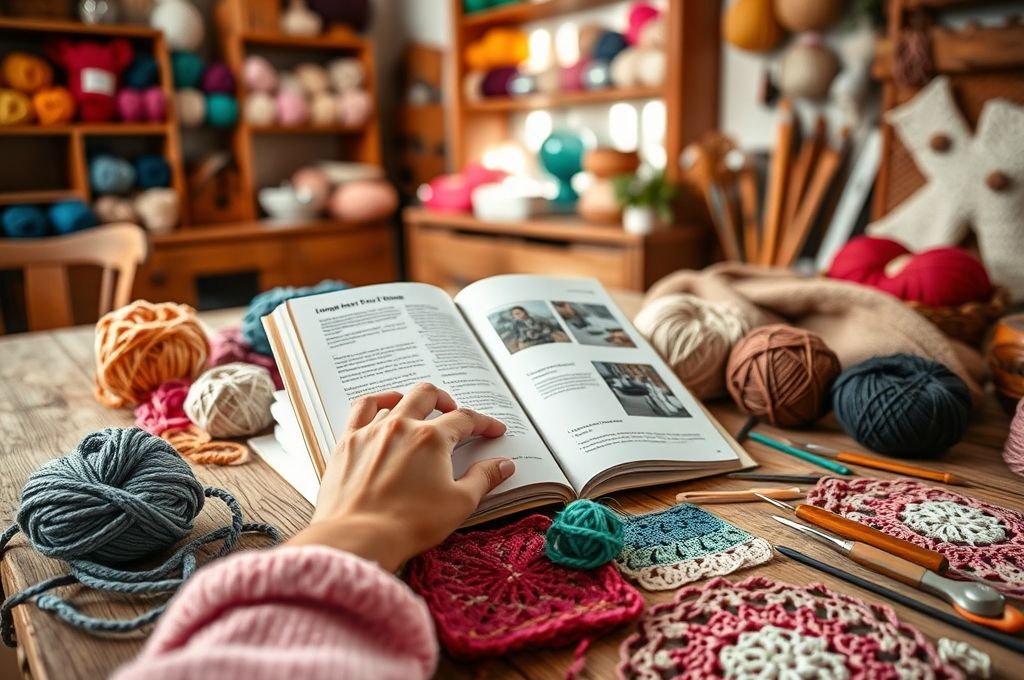Unraveling the Magic of Specialty Yarns
Have you ever picked up a skein of yarn and felt like you were holding a piece of art? Not just any yarn—something soft as a cloud, shimmering with metallic threads, or textured like a forest floor? That’s the magic of specialty yarns. These aren’t your average acrylics from the craft store; they’re the stars of the fiber world, designed to inspire, surprise, and elevate your knitting and crochet projects to a whole new level.
Specialty yarns go beyond traditional fibers. They include hand-dyed silks, luxurious cashmere blends, sparkly lurex, fluffy mohair, and even experimental plant-based or recycled materials. Whether you’re making a statement scarf, a cozy baby blanket, or an heirloom sweater, specialty yarns can transform your work from “nice” to “unforgettable.”
But here’s the thing: working with these unique materials isn’t always as simple as picking up needles and going. Their textures, fiber content, and care requirements can be unpredictable. That’s why understanding how to choose, handle, and care for specialty yarns is essential—especially if you want your finished piece to look and feel as amazing as it should.
In this guide, we’ll walk you through everything you need to know about specialty yarns. From understanding what makes them special to mastering techniques for working with them, troubleshooting common issues, and even caring for your finished projects, this is your go-to resource. Whether you’re a seasoned crafter or just starting to explore beyond basic worsted weight, you’ll leave with the confidence to embrace these beautiful, sometimes tricky, but always rewarding materials.
Let’s dive in and discover how specialty yarns can bring your creative visions to life.
What Makes a Yarn “Specialty”? Beyond the Basics

When we talk about specialty yarns, we’re not just referring to price or rarity. The term “specialty” describes yarns that stand out due to their fiber content, texture, construction, color application, or ethical sourcing. Unlike standard commercial yarns, which are often uniform and machine-made for consistency, specialty yarns celebrate individuality and craftsmanship.
Take, for example, a hand-dyed gradient yarn. Each skein is unique—no two are exactly alike. This is part of the charm, but also a challenge. Or consider a bouclé yarn, with its looped texture that adds dimension but can snag easily. These characteristics make specialty yarns exciting to work with, but they also require a different approach.
Common types of specialty yarns include:
- Luxury fibers like alpaca, cashmere, silk, and qiviut (from muskox)
- Textured yarns such as chenille, roving, eyelash, or ladder yarn
- Novelty yarns with metallic threads, beads, or sequins
- Artisan or small-batch yarns dyed in small quantities with natural or eco-friendly dyes
- Sustainable or innovative yarns made from bamboo, hemp, recycled cotton, or even seaweed
One of the biggest appeals of specialty yarns is their story. A skein of silk from a family-run farm in Thailand or a handspun wool from a shepherd in Scotland carries a narrative that mass-produced yarns simply can’t match. This emotional connection often inspires crafters to create more thoughtfully and intentionally.
But specialty doesn’t always mean expensive. Some indie dyers offer affordable mini-skeins perfect for accents, while others create accessible blends that combine luxury fibers with more durable ones like nylon or merino. The key is knowing what to look for—and how to use it wisely.
So, what’s the first step in working with these unique materials? Understanding their structure and behavior. Let’s explore how fiber content impacts your project.
Fiber Matters: How Material Affects Your Craft
You wouldn’t bake a cake with motor oil, right? In the same way, choosing the right fiber for your project is crucial. The material of your yarn influences everything: drape, warmth, durability, stitch definition, and even how it feels in your hands as you work.
Let’s break down some of the most popular specialty fibers and what they bring to the table:
- Silk: Silky smooth and lustrous, silk adds incredible sheen and drape. It’s perfect for shawls, wraps, and elegant garments. But it’s slippery, so beginners might find it tricky to control. Pairing silk with wool (like in a silk-merino blend) can add grip while keeping that luxurious shine.
- Cashmere: Soft as a whisper and incredibly warm, cashmere is the gold standard for luxury. However, it’s delicate and prone to pilling. Best used in accessories or garments that won’t see heavy friction.
- Mohair: Known for its halo (a fuzzy, cloud-like effect), mohair creates dreamy, lightweight fabrics. It’s often held double with another yarn to add fluff without weight. But be careful—some mohair can be scratchy, so check the micron count (finer = softer).
- Alpaca: Warmer than wool and hypoallergenic, alpaca is a favorite for winter wear. It has less elasticity than wool, though, so it can stretch out over time. Look for blends that include nylon or elastic fibers for better shape retention.
- Plant-based fibers (like bamboo, linen, or hemp): These are breathable and great for summer projects. Linen gets softer with each wash, but it’s stiff at first. Bamboo drapes beautifully but can be slippery.
- Synthetic blends (such as nylon, acrylic, or polyester): Often added to natural fibers to improve durability. A 70% merino/30% nylon sock yarn, for example, resists wear while keeping softness.
Pro Tip: Always read the yarn label. It tells you fiber content, weight, recommended needle size, and care instructions. Ignoring it can lead to heartbreak—like a shrunken sweater after washing.
Understanding fiber behavior helps you match the yarn to your project. Want a cozy winter hat? Go for alpaca or cashmere. Need a breathable summer top? Try bamboo or linen. The right fiber doesn’t just look good—it works with your design.
And speaking of design, let’s talk about how specialty yarns influence your choice of patterns.
Choosing the Right Pattern: Let the Yarn Lead the Way

Here’s a secret many experienced crafters know: let the yarn choose the pattern, not the other way around.
It’s tempting to fall in love with a beautiful sweater pattern, then go hunting for yarn to match. But with specialty yarns, that approach can backfire. A delicate silk might not hold up in a complex cable pattern, and a fluffy mohair could swallow intricate lace stitches.
Instead, start with the yarn. Ask yourself:
- What does this yarn want to be?
- Is it meant to drape, shine, or add texture?
- Does it have a bold color that should be the star?
For example:
- A solid, smooth silk yarn shines in lace shawls or simple drapey tops where stitch definition matters.
- A variegated, self-striping yarn works best in garter stitch or stockinette, where the colors can flow without competing with complex patterns.
- A thick-and-thin art yarn might be perfect for a rustic cowl or decorative wall hanging, but too unpredictable for a fitted garment.
Rule of thumb: The more unique the yarn, the simpler the pattern should be. This lets the material speak for itself.
Also, consider yardage. Many specialty yarns come in smaller skeins (often 100g or less). Before starting a large project, calculate how many skeins you’ll need—and buy them all at once. Dye lots vary, and you might not be able to match the color later.
Want a real-life example? Imagine using a hand-dyed gradient yarn. A simple triangular shawl with increases worked in garter stitch allows the colors to bloom gradually, creating a stunning ombre effect. Add cables or colorwork, and the gradient might get lost.
By designing with the yarn, not against it, you honor its uniqueness and increase your chances of a successful, beautiful finish.
Now that you’ve chosen your yarn and pattern, how do you actually work with these sometimes finicky materials?
Techniques for Working with Tricky Textures
Not all yarns play nice. Some are slippery, others are fuzzy, and a few seem to have a mind of their own. But don’t let that scare you off. With the right techniques, you can tame even the most temperamental specialty yarn.
Here are practical tips for common challenges:
1. Slippery Yarns (Silk, Rayon, Bamboo):
- Use wooden or bamboo needles instead of metal—they provide more grip.
- Work at a slower pace to avoid dropped stitches.
- Consider using a lifeline (a thin thread threaded through a row of stitches) when knitting lace. If you make a mistake, you can rip back to the lifeline without losing your entire project.
2. Fuzzy or Halo Yarns (Mohair, Angora):
- These can obscure stitch definition, making it hard to see where to place your needle.
- Use larger needles than usual to keep the fabric open and manageable.
- Don’t panic if you make a mistake—frogging (ripping out stitches) can be messy, but it’s doable. Just go slowly and use a crochet hook to help pull loops through.
3. Thick-and-Thin or Art Yarns:
- These vary in diameter, so your tension will naturally change.
- Embrace the irregularity—it’s part of the charm.
- Use simple stitches like garter or seed stitch to avoid frustration.
4. Metallic or Beaded Yarns:
- These can be harsh on needles and fingers.
- Use blunt-tipped needles to prevent snagging.
- Alternate with a plain yarn (held together) to soften the feel and distribute the sparkle.
5. Roving or Cloud Yarns (like Isager Två):
- These are delicate and can break if pulled too hard.
- Handle gently and avoid tugging.
- Best used for lightweight accessories, not heavy garments.
Bonus Tip: Always swatch—even if you’re not checking gauge. A swatch helps you test how the yarn behaves with different stitches and needles. It’s like a rehearsal before the main performance.
With a little patience and the right tools, you’ll find that even the most challenging yarns can produce breathtaking results.
But what happens when things go wrong? Let’s troubleshoot some common issues.
Troubleshooting Common Problems with Specialty Yarns
Even the most experienced crafters run into issues with specialty yarns. The good news? Most problems have simple fixes.
Problem 1: The Yarn Splits Easily
- Common with hand-spun or loosely plied yarns.
- Solution: Use needles with smooth, rounded tips. Bamboo or nickel-plated needles work better than sharp metal ones. Also, slow down—rushing increases splitting.
Problem 2: Color Bleeding
- Especially with hand-dyed or intensely colored yarns.
- Solution: Always wash a swatch first. If color runs, soak the skein in cold water with a splash of vinegar before using. This helps set the dye.
Problem 3: The Fabric Feels Too Stiff or Too Loose
- Could be due to wrong needle size or fiber behavior.
- Solution: Re-swatch with different needle sizes. For stiff fabric, go up a size. For loose fabric, go down. Remember, specialty yarns often need different gauges than recommended.
Problem 4: The Yarn Fuzzes or Pills
- Natural with fibers like cashmere or mohair.
- Solution: Accept it as part of the character. Use a fabric shaver gently if needed. Better yet, design projects where pilling is less noticeable (like textured stitch patterns).
Problem 5: The Project Looks Nothing Like the Photo
- Often due to differences in drape or color interpretation.
- Solution: Trust the process. Take photos in natural light and block your piece. Blocking can dramatically improve the final look.
Pro Tip: Keep a yarn journal. Note down which yarns you used, needle size, stitch pattern, and any issues. Over time, you’ll build a personal reference guide.
Remember, imperfections don’t mean failure—they mean you’re working with real, living materials. And that’s part of the beauty.
Now that your project is complete, how do you keep it looking its best?
Caring for Your Specialty Yarn Creations
You’ve spent hours—maybe weeks—on your masterpiece. The last thing you want is to ruin it in the wash.
Specialty yarns often require gentle care. Here’s how to keep them in top condition:
1. Always Check the Label
- Follow care instructions to the letter. If it says “hand wash only,” don’t toss it in the machine.
2. Hand Washing Basics
- Use cool water and a mild detergent (like Woolite or baby shampoo).
- Soak for 10–15 minutes, gently squeezing—never wring or twist.
- Rinse in clean water until it runs clear.
3. Drying Properly
- Lay flat on a clean towel, reshaping to size.
- Avoid hanging, as wet fibers can stretch under their own weight.
- Keep out of direct sunlight to prevent fading.
4. Storing Safely
- Fold, don’t hang, to prevent stretching.
- Store in a cool, dry place away from moths. Cedar blocks or lavender sachets help deter pests.
- Use breathable cotton bags, not plastic, which can trap moisture.
5. Dealing with Stains
- Blot, don’t rub. Use a small amount of mild soap and water.
- For oil-based stains, sprinkle cornstarch, let sit, then brush off.
6. Reviving Old Projects
- A gentle wash and block can refresh a faded or misshapen piece.
- Steaming (with a damp cloth between iron and fabric) can restore drape.
Investing time in care ensures your specialty yarn projects last for years—maybe even generations.
But beyond technique and maintenance, there’s something deeper at play when we work with these materials.
The Emotional and Creative Impact of Specialty Yarns
Crafting with specialty yarns isn’t just about the end product. It’s a sensory and emotional experience.
Think about it: the softness of cashmere against your fingers, the way silk catches the light, the surprise of a hidden color shift in a variegated skein. These moments connect us to our creativity in a profound way.
Many crafters report that working with luxurious or unique yarns feels like self-care. There’s a mindfulness in choosing each stitch, a slowness that contrasts with our fast-paced world. It’s not just about making something—it’s about being with the process.
Specialty yarns also encourage intentional making. Because they’re often more expensive or limited, we tend to plan more carefully, choose patterns thoughtfully, and appreciate the time we spend on them.
And let’s not forget the joy of gifting. Giving a hand-knit scarf made from hand-dyed silk isn’t just a present—it’s a piece of your time, energy, and love.
In a world of mass production, handmade items made with specialty yarns stand out as acts of resistance and reverence. They say: This matters. You matter.
So yes, specialty yarns can be tricky. They require patience, care, and sometimes a bit of courage. But the rewards—both tangible and emotional—are worth it.
Conclusion: Embrace the Journey of Working with Specialty Yarns
We’ve covered a lot in this guide: what makes a yarn “specialty,” how fiber choice affects your project, how to pick the right pattern, techniques for handling tricky textures, troubleshooting common issues, proper care, and even the emotional depth of working with these materials.
The truth is, specialty yarns aren’t just about luxury or aesthetics. They’re about connection—to craft, to creativity, to the stories behind the fibers, and to the people who make and use them.
You don’t need to spend a fortune to enjoy them. Start small: try a mini-skein in a new fiber, experiment with a simple scarf, or add a pop of texture to an existing project. Each step builds your confidence and deepens your appreciation.
So go ahead—unwrap that beautiful skein. Let your fingers explore its texture, admire its colors, and imagine what it could become. Don’t fear mistakes; they’re part of the journey. What matters is that you’re creating, learning, and expressing yourself.
Your turn: What’s the most memorable specialty yarn you’ve ever worked with? Share your story in the comments below—or better yet, take a photo of your latest project and tag us. Let’s celebrate the beauty of handmade, one luxurious stitch at a time.
Happy crafting!

Daniele Ferreira is passionate about the world of crochet, dedicating her time to exploring techniques, creating unique pieces, and sharing her knowledge with beginners and aficionados alike. With attention to detail and creativity, she transforms yarn into true works of art, inspiring others to discover the beauty and joy of this manual art.







